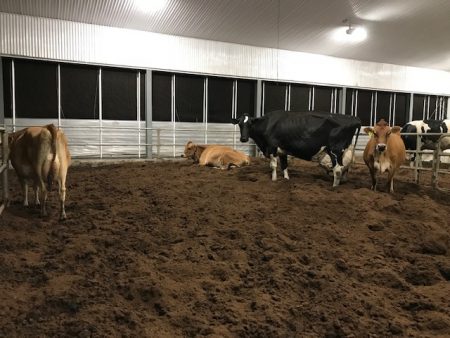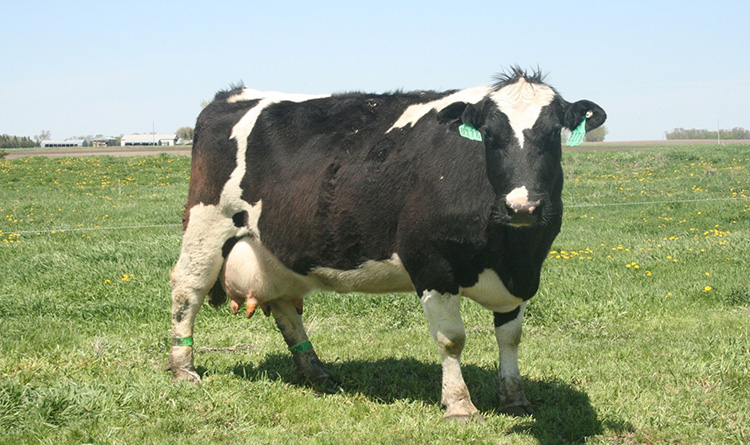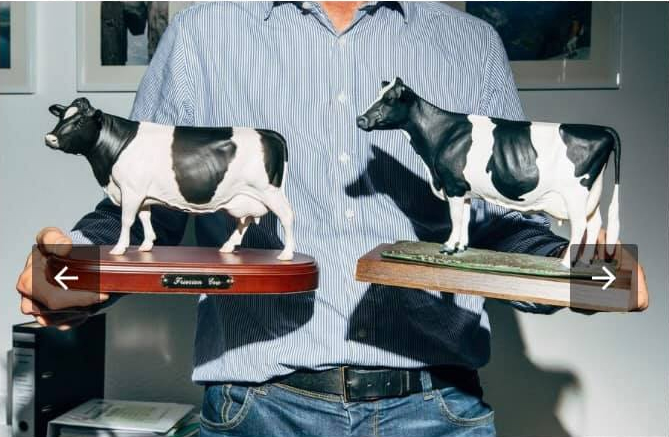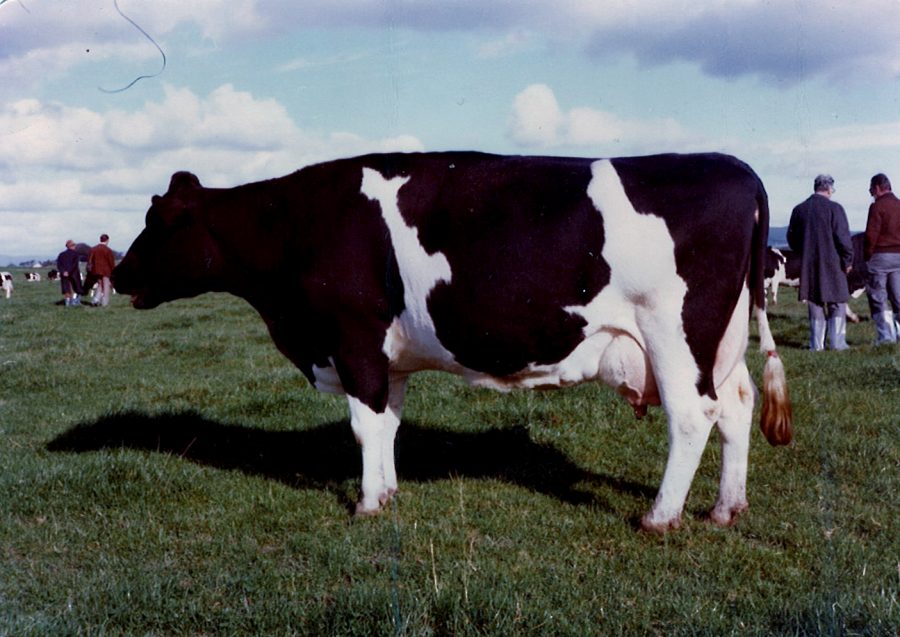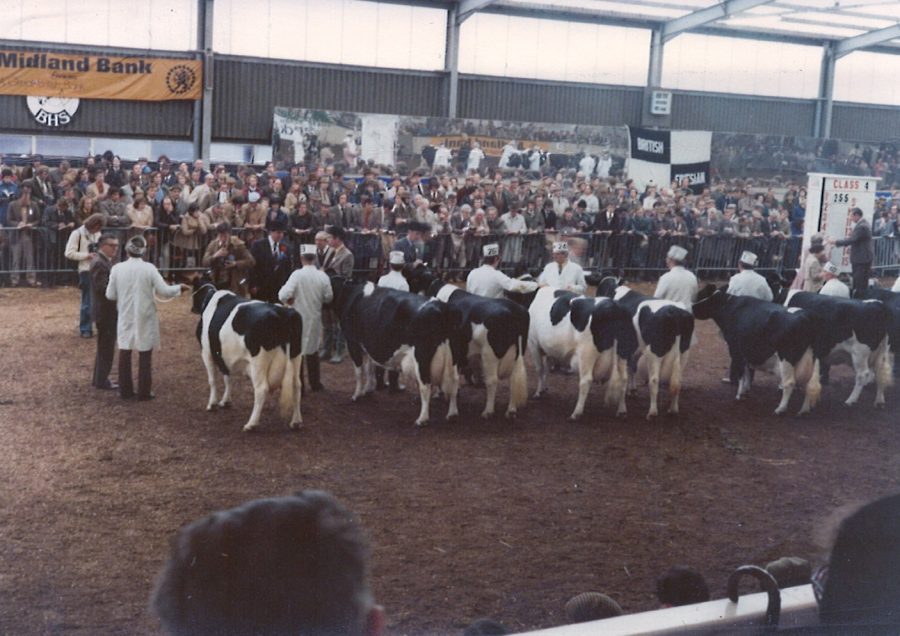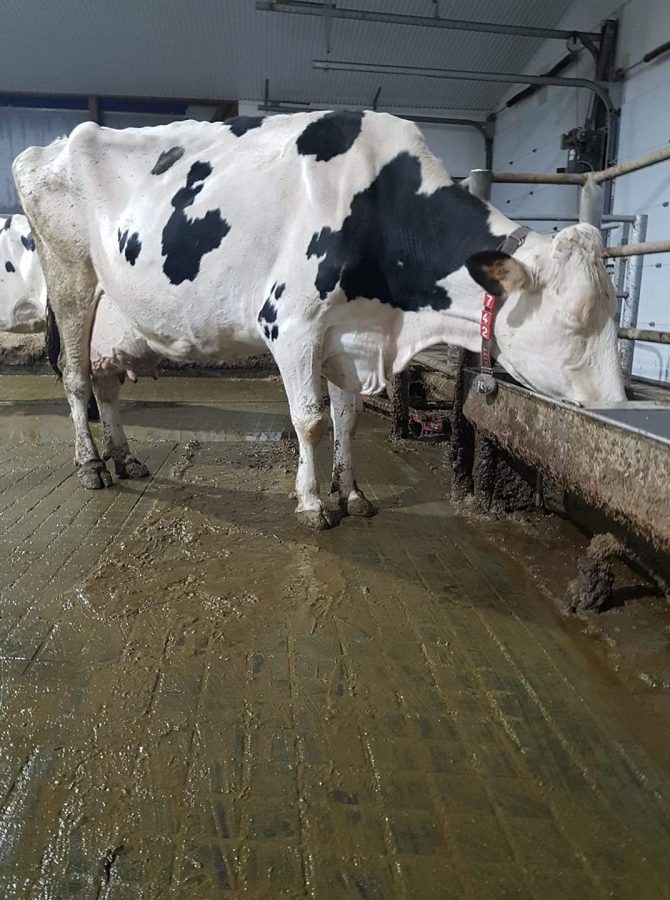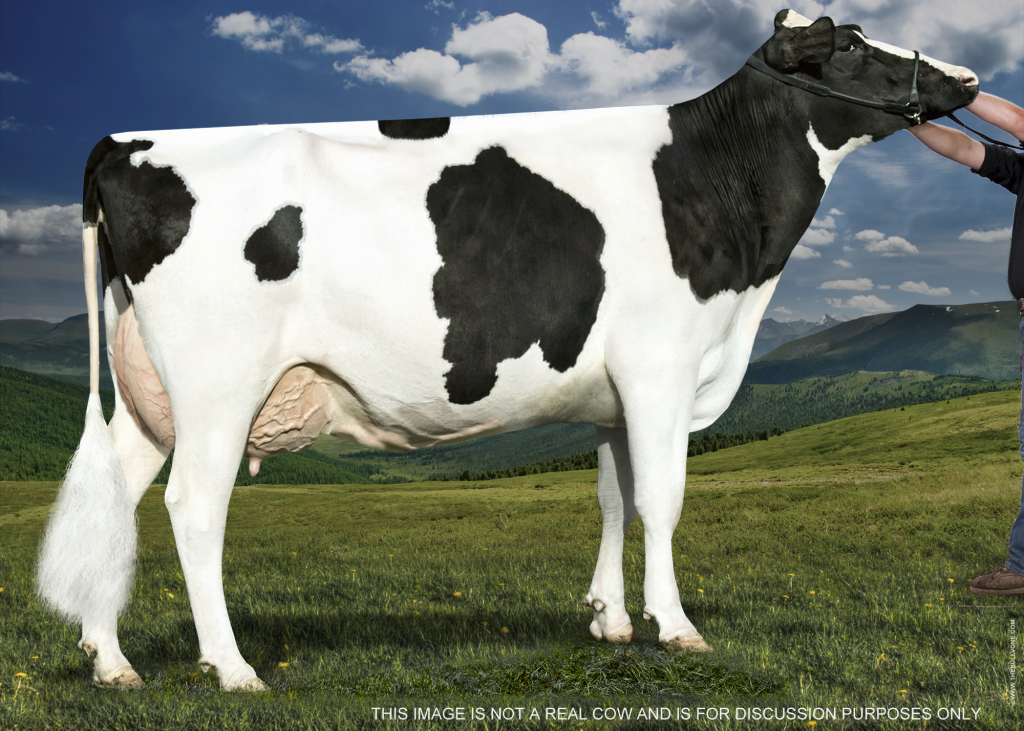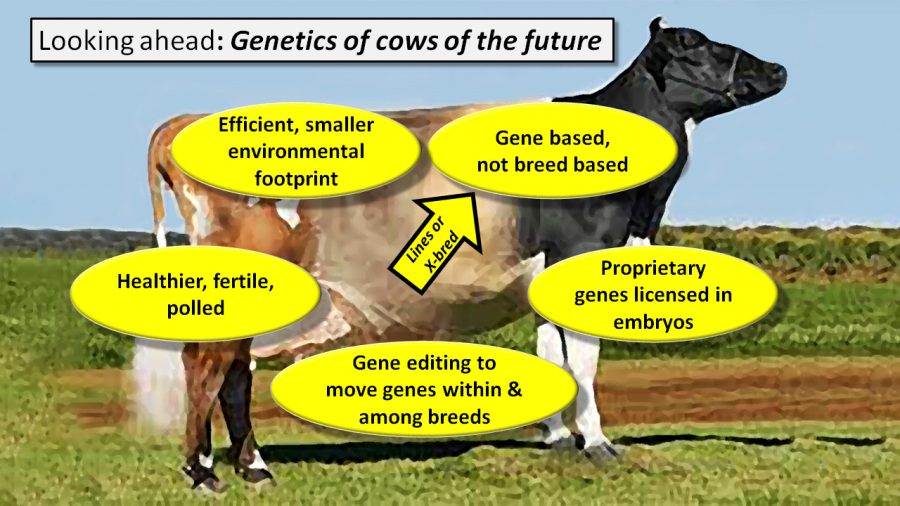Explore the transformative journey of Semex over the last half-century. Curious about the key factors driving their groundbreaking innovations and sustained leadership in the genetics field? Continue reading to uncover their story.
Success stories in innovation always pique our interest, especially from traditional fields like livestock improvement. Over the past half-century, one company has consistently impressed with its innovative approach and unwavering determination to push the boundaries. That company is Semex, a name that sparks curiosity and invites us to delve deeper into its unique methods.
Semex’s journey is a saga of resilience, innovation, and progress. For over 50 years, they have led the way in genetic innovation, introducing solutions that have reshaped the global dairy sector. Their pioneering approach has transformed once-unthinkable practices into industry norms, a testament to their unwavering determination and forward-thinking. As we explore Semex’s journey, you’ll be inspired by their resilience and progress, sparking your innovative thinking.
The Humble Beginnings Sparked a Revolution in the Dairy Sector.
In May 1974, Semex embarked on its journey in cattle breeding with a humble team of six employees, exporting just over 200,000 doses of semen. Today, it is a testament to the power of determination and innovation—this leading cooperative exports genetics to over 80 countries. With an annual turnover exceeding 180 million USD, Semex is supported by a global team of more than 1,800 workers and 110 distributors. Their growth and success are a source of admiration and Inspiration for all.
A revolution in livestock breeding began in 1953 with the innovation of deep-freezing semen, moving beyond the limitations of fresh semen’s short preservation. By 1959, the first Canadian semen was exported to Germany, marking a significant milestone. Roy G. Snyder, then secretary-manager of the Ontario Association of Animal Breeders, oversaw the export of 17,016 doses to nine countries by 1967, laying the groundwork for what would become Semex.
The inception of Semex in 1974 was a monumental development led by Snyder’s vision, creating a Canadian cooperative to export top genetics. Unifying all Canadian AI studs, Semex Canada sold 209,354 doses to 31 countries in its first year, cementing Canada’s influence in the international cattle genetics market.
Committed to a journey of continuous improvement, Semex has invested heavily in research and development, enhancing the quality and diversity of its product lineup. In 1986, Semex established Boviteq, which specializes in embryo transfers and in vitro fertilization. Located in St. Hyacinthe, Quebec, Boviteq quickly gained a global reputation for its pioneering work in embryology and semen quality research, significantly contributing to Semex’s growth and future success.
Today, Semex employs 400 personnel across five divisions, reflecting its dedication to excellence in multiple fields.
Uncover the Practices That Made Semex a Unique Player in Genetics
What sets Semex apart in a competitive market? It’s its unique practices and commitment to exemplary service. Since its inception, Semex has defied traditional dairy and beef genetics through innovative strategies. Technological advancements, such as the launch of their genomic testing service, Elevate(TM), have set new industry standards. These examples of Semex’s innovative practices demonstrate their relentless focus and determination.
Semex’s strategic partnerships have enhanced genetic diversity and fostered industry growth. Collaborations with global breed associations have enriched their genetic offerings and promoted sustainability within the dairy and beef sectors, a testament to Semex’s collaborative and forward-thinking approach.
Technology is at the heart of Semex’s growth. The launch of their genomic testing service, Elevate, is a prime example. By using advanced genetic science to breed animals with more robust immune responses, Semex has revolutionized herd health and welfare. Their commitment to quality ensures only the highest-standard sires make it into their catalog, providing exceptional products for customers and setting new industry standards.
Enter Matt McCready, the new CEO, in 2024, who provides a unique perspective on Semex’s vast reach. “More than merely boasting the title as one of the world’s premier genetics providers, Semex has demonstrated its prowess as a global leader in offering comprehensive solutions, including advanced activity monitoring systems, for over 15 years,” he states.
“The key to enduring success lies in adaptability and the relentless pursuit of excellence,” asserts Matt McCready. Ingrained in Semex’s narrative, this principle defines the company’s ascent from humble beginnings to global leadership in bovine genetics. Semex’s journey epitomizes the power of vision, collaboration, and an unwavering commitment to quality.
In an impressive stride towards sustainability, Semex, in partnership with Lactanet, launched the world’s first Methane Efficiency Index in April 2023. This innovative solution, paired with the Immunity+ brand Semex, offers clients the dual benefit of reducing methane emissions and healthier animals, thereby scaling down antibiotic use and demonstrating their commitment to responsible and sustainable practices.
Meet the Millionaire Sires: Semex’s Prolific Contributors to Genetic Excellence
Let’s explore the magnificent story of Semex’s 13 millionaire sires, a testament to the breeders’ satisfaction with Semex genetics and the indisputable quality they represent.
| Sire | Contributions |
|---|---|
| Hanoverhill Inspiration | It began with Hanover-Hill Inspiration, the first semen millionaire Semex introduced. Inspiration, a remarkable son of Triple-Threat Lulu EX-96, was born in 1981 and became the first bull to produce 1 million semen doses by 1995. He pioneered exceptional genetic traits, contributing significantly to dairy cattle excellence. |
| Madawaska Aerostar | Notable for enhancing milk production and dairy cattle robustness. |
| Startmore Rudolph | Recognized for his contributions to improving overall herd quality. |
| Comestar Lee | Over 183,000 daughters, impacting global dairy cattle breeding significantly. |
| Comestar Leader | Over 111,000 daughters, solidifying Semex’s global influence in dairy breeding. |
| Crackholm Fever | Renowned for superior genetic traits and enhancing dairy cattle lineage. |
| Mainstream Manifold | Noted for his genetic excellence and contribution to herd improvement. |
| R-E-W Buckeye | Played a critical role in advancing dairy genetics and production capabilities. |
| Ladino Park Talent *RC | Praised for his role in producing robust and high-yielding dairy cattle. |
| Comestar Outside | A pivotal sire in enhancing genetic quality and herd performance. |
| Comestar Lheros | Made significant strides in improving dairy breeding programs worldwide. |
| Stouder Morty | Known for his lasting contributions to genetic excellence in dairy cattle. |
| Oliveholme Aeroline | Remarkable for his role in advancing dairy cattle genetics and productivity. |
Since 1979, Semex has proudly received 70 Holstein Premier Sire banners at the World Dairy Expo and the Royal Winter Fair, illustrating their consistent excellence in genetics.
Numerous Gold Medal Sires, recognized by The Holstein Association of America for their superior milk, fat, and protein production and conformation, add to Semex’s accolades.
Revolutionizing Dairy Farming: Key Technological Breakthroughs
The narrative of Semex’s transformational impact on dairy farming is intricately linked with its zealous pursuit of scientific innovation and technological advancements. One of the critical breakthroughs has been the integration of genomic selection. This technology allows breeders to analyze the DNA of dairy cattle, offering unprecedented accuracy in predicting an animal’s genetic potential. By identifying superior traits early, Semex has dramatically enhanced its ability to develop elite sires and dams, streamlining the propagation of desirable characteristics throughout dairy herds.
Another cornerstone is the advanced reproductive technique known as embryo transfer. This enables Semex to amplify the genetic contributions of their top-tier females, vastly improving herd genetics. Superior embryos from high-genetic-merit cows are implanted into recipient cows, expediting the spread of valuable genes and accelerating genetic gain.
Furthermore, Semex’s commitment to innovation exemplifies its adoption of proprietary software tools. These platforms meticulously track and analyze herd performance data. By leveraging big data analytics, Semex refines its breeding programs, ensuring comprehensive, real-time insights inform selection decisions. This approach optimizes individual animal performance and enhances overall herd productivity.
In addition, Semex invests in state-of-the-art infrastructure. Their laboratories, equipped with cutting-edge technology, support research and practical applications. This investment underscores their dedication to remaining at the forefront of the dairy genetics field.
These technological advancements provide Semex with an unparalleled toolkit for transforming dairy farming. By staying at the vanguard of genetic science and technology, Semex fulfills its mission of enhancing the global dairy industry and contributes significantly to the sustainability and efficiency of agricultural practices worldwide.
Semex Works by Working with Others
Partnerships and collaboration are the foundation of Semex’s strategy. The creation of the Semex Alliance in 1997 highlights this focus. Major alliances were formed, including with SwissGenetics in 2004 and 2005, securing the production and distribution rights for sexed semen.
The International Livestock Management School is another landmark, with people from over 130 countries improving cattle farming through its Canadian-designed programs. These collaborations have fueled Semex’s expansion and innovation.
McCready elaborates, “What sets Semex apart is its scientific expertise and ability to form symbiotic relationships with farmers, researchers, and other stakeholders worldwide.” This underscores a critical factor in Semex’s success: its extensive geographical and relational reach. By fostering an inclusive network of collaborators, Semex has strengthened its genetic programs and ensured its innovations are cutting-edge. McCready’s insight highlights that Semex’s true strength lies in its expansive and integrated approach to genetic excellence, which has driven the company’s sustained growth and impressive global footprint.
“Semex’s commitment to infrastructure and genetics remains steadfast,” McCready emphasizes. Market challenges, including production costs, persist, but global reach aids client engagement.
Semex continues to grow. “We have expanded our sexed semen lab and sire housing,” McCready notes. BoviTeq’s swift growth and new partnerships with DataMars and the MILC group in 2023 promise long-term benefits for clients.
In 2024, Semex will integrate Brazilian companies Semex Brazil, Tairana, and Cenatte, unlocking new growth avenues. In summary, Semex’s fifty-year journey is marked by genetics, innovation, and resilience, paving the way for future success.
Influential Leaders at Semex – Pillars of Greatness
Understanding Semex’s success is only possible by acknowledging the tremendous leaders who laid the groundwork and navigated the ship through innovation and ingenuity. Influential figures were present at every twist and turn.
- Roy Snyder’s pivotal contribution cannot be overlooked. As the founder, Snyder, a visionary dairy farmer from Ontario, recognized the potential of artificial insemination in dairy farming. His leadership integrated this groundbreaking technology into Semex’s genetic improvement strategies, establishing a unique space in a competitive industry.
- Dr. Moe Freeman propelled Semex toward its current stature in genetic innovation. His strategic implementation of advanced genetic techniques and innovative practices set new industry standards, making Freeman a key architect of Semex’s modern-day pre-eminence.
- Robert Chicoine combined cattle breeding strategies with innovative leadership, capitalizing on partnerships and alliances to fortify Semex’s global footprint. He was instrumental in forming the Semex Alliance, broadening access to high-quality genetic material.
- Paul Larmer served over four decades in the industry, 17 years as Semex’s CEO. Larmer maintained an edge through innovation, quality, and customer satisfaction. He fostered global collaborations, expanding Semex’s impact and supporting genetic advancements. His legacy extends beyond his tenure, laying the foundation for ongoing innovation.
Community Impact: Semex’s Role in Local and Global Communities
Semex’s influence extends beyond laboratories and dairy barns, deeply embedding within local and global communities. Central to Semex’s community efforts is an unwavering commitment to sustainability and social responsibility. This dedication is displayed through support for local agricultural education and global initiatives addressing food insecurity. By partnering with educational institutions, Semex ensures that future agricultural professionals have the essential skills and knowledge for innovation.
Semex’s commitment to fostering future agricultural leaders shines through its support for youth and 4-H programs. By investing in these organizations, Semex provides essential learning experiences and growth opportunities. Sponsoring 4-H events and offering scholarships, Semex empowers young agricultural enthusiasts, ensuring a continuous flow of talent and innovation. This commitment strengthens the farming community and maintains a legacy of excellence. Many of Semex’s top executives are from youth events sponsored by Semex and their co-op owners.
This holistic approach to community impact reflects Semex’s belief in collective progress. Brad Sayles, Chief Operating Officer, captures this ethos: “Our success is intrinsically linked to the well-being of the communities we serve. We aim to create a ripple effect benefiting local and global populations by fostering inclusivity and innovation.”
Learn About the Future Vision of Semex – What’s Next?
Embarking on the next stage of its journey, Semex is still in progress; its leaders envision a future that harnesses advanced and emerging technologies. Be it artificial intelligence, genomics, or innovative breeding techniques, each technological advance presents a new opportunity.
Guided by Chief Operating Officer Brad Sayles, optimism for the future is palpable. “Our priorities have always been centered on delivering genetic solutions that improve herd profitability while ensuring animal well-being and sustainability. We believe in the power of innovation and collaboration to drive progress in the dairy industry,” says Sayles. “Innovation drives every decision we make.”
The Semex Board of Directors’ steadfast commitment to innovation, quality, and partnerships has been the backbone of the company’s success. Sayles and the Semex team intend to uphold and surpass this ethos as they surge into the future.
Semex’s promising partnerships and alliances across international borders are fundamental to its continued success. With a commitment to innovation and maintaining high-quality relationships, Semex’s rich history appears as promising as its future. That’s fifty years in the making, and it’s just the beginning. Buckle up and join the journey as Semex carves a new chapter in the story of genetic innovation.
The Bottom Line
Semex’s half-century success in genetics underscores its innovative approaches, strong leadership, and effective teamwork. Led by visionaries like Robert Chicoine, Paul Larmer, Moe Freeman, and Roy Snyder, the company has excelled through strategic partnerships and a steadfast commitment to excellence. Looking ahead, Semex remains dedicated to collaboration, honoring its legacy, and maintaining market leadership. This narrative highlights the fusion of science, business acumen, and human ingenuity. As Semex marks this milestone, it continues to lead in cattle breeding, advance genetics and set new standards through unwavering partnership and customer collaboration.
Key Takeaways:
- A global leader: Established in 1974, Semex has grown into a powerhouse, exporting genetics to over 80 countries worldwide.
- Legacy of innovation: With roots tracing back to 1953, the company has continually pushed the boundaries of livestock breeding and genetic research.
- Pioneering exports: The first Canadian semen was exported by Semex to Germany in 1959, marking a significant milestone in the industry’s history.
- Unified excellence: In 1974, Semex Canada unified all Canadian AI studs, creating a cohesive and formidable entity in the field of genetics.
- Investment in R&D: Significant investments in research and development have allowed Semex to enhance the quality and diversity of its product lineup consistently.
- Advanced reproductive technologies: The establishment of Boviteq in 1986, specializing in embryo transfers and in vitro fertilization, exemplifies Semex’s commitment to cutting-edge advancements.
- Strategic integration: The planned integration of Semex Brazil, Tairana, and Cenatte in 2024 signals new growth avenues and expanded influence.
- Commitment to community: Beyond its genetic advancements, Semex impacts both local and global communities, emphasizing its holistic approach to industry leadership.






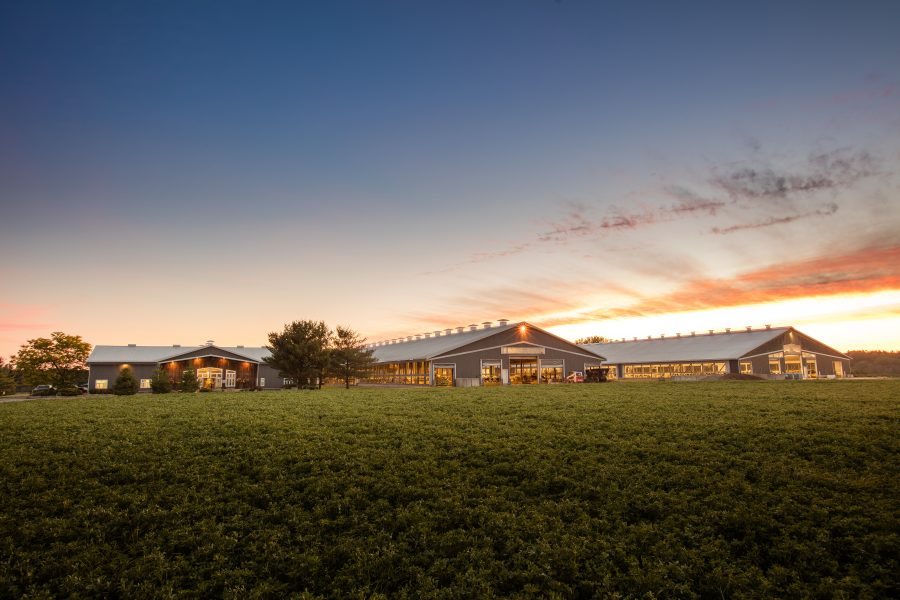
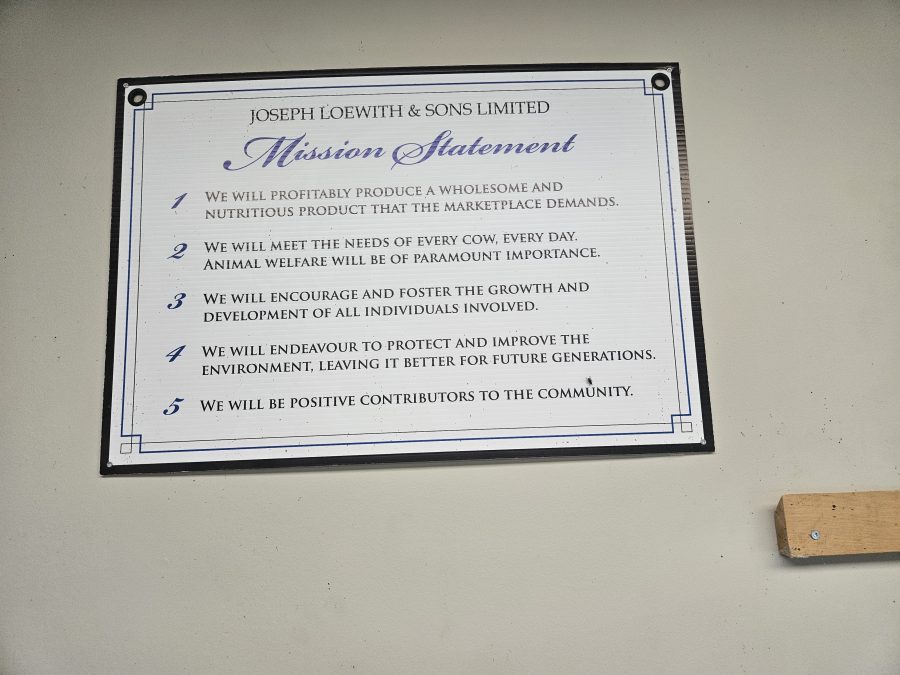
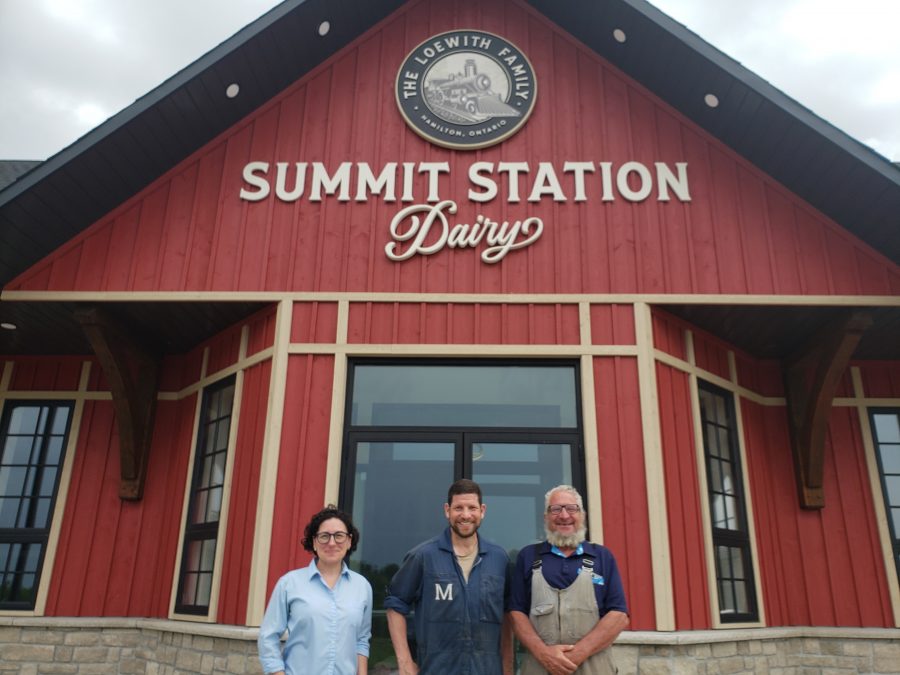
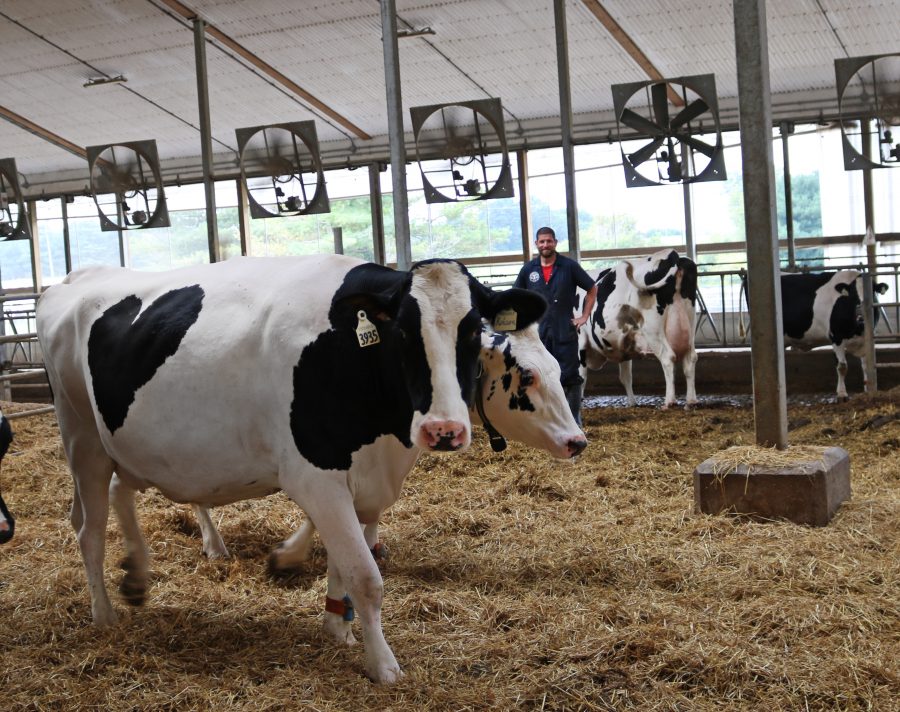

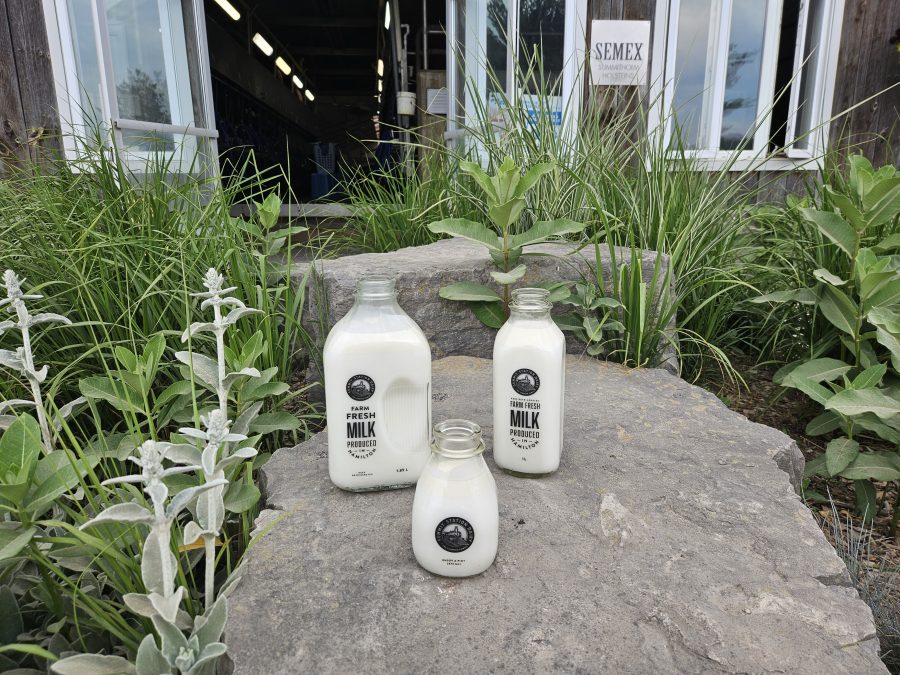
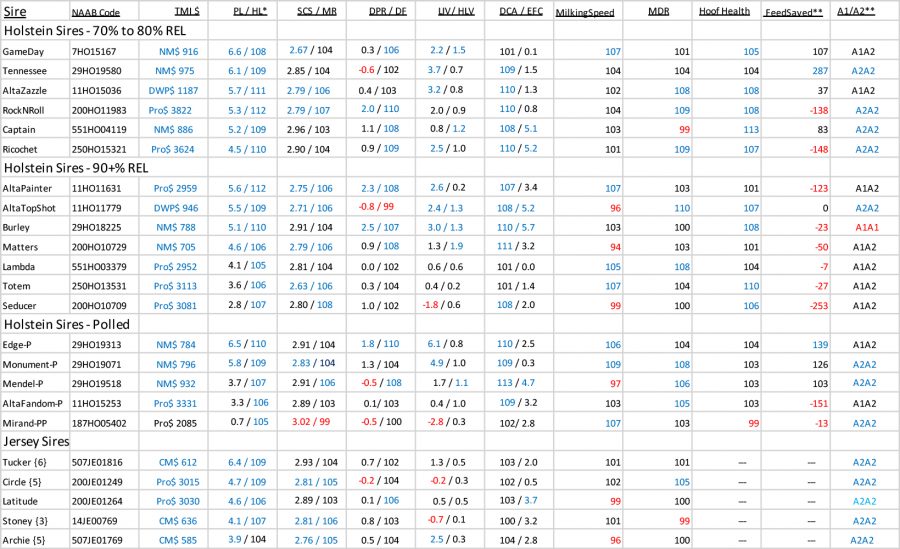
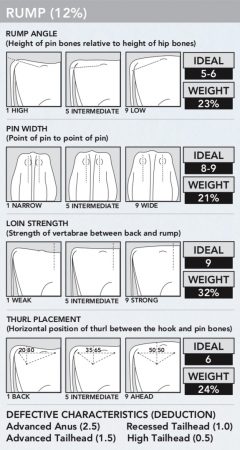
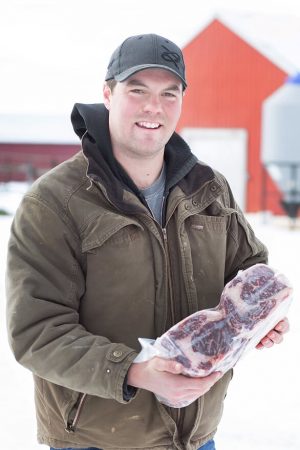 Every dairy farmer is also a beef producer – even more, today than in the past. How so? Today there is considerably less demand for springing bred or newly calved heifers. Also, we must factor in sexed semen, and more effective on-farm cattle management and dairy farms are being advised to breed from 30% to 50% of their lower producing or lower profit cows and heifers to beef sires. The Bullvine wishes to share with you how one innovative dairyman, Ian Crosbie owner of Benbie Holsteins from Saskatchewan Canada, approached this profit opportunity.
Every dairy farmer is also a beef producer – even more, today than in the past. How so? Today there is considerably less demand for springing bred or newly calved heifers. Also, we must factor in sexed semen, and more effective on-farm cattle management and dairy farms are being advised to breed from 30% to 50% of their lower producing or lower profit cows and heifers to beef sires. The Bullvine wishes to share with you how one innovative dairyman, Ian Crosbie owner of Benbie Holsteins from Saskatchewan Canada, approached this profit opportunity. 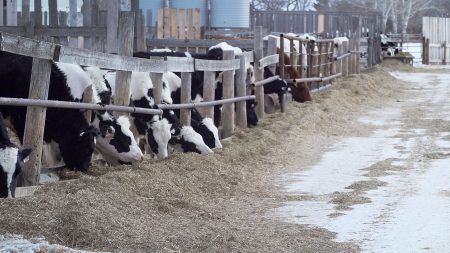 Benbie Holsteins, a high genetic high performance 160 milking cow Holstein family farm, has for a few years been breeding a portion of their lower end females to Angus sires.
Benbie Holsteins, a high genetic high performance 160 milking cow Holstein family farm, has for a few years been breeding a portion of their lower end females to Angus sires.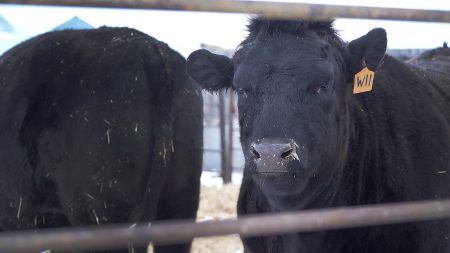 For the first 18 months of life, Benbie’s Wagyu/Holstein crosses are raised with their dairy animals. After that, they are separated and feed the specialized diet until they are finished at 28 months of age. There are approximately a dozen animals in the finishing pen at any given time. Although that number is not large, it must be remembered that Snow Beef has been in operation for just over a year and it easily fits into Benbie Holsteins without requiring extra labour and facilities. Benbie Holsteins now breeds 35% of its females to beef – 50% to Wagyu and 50% to Angus – so, Snow Beef will grow in size. Ian added: “Working with a good butcher is necessary. Shane Oram of Westbridgeford Meats has worked with us to get the cutting and wrapping done in a way to get the most value out of each carcass.”
For the first 18 months of life, Benbie’s Wagyu/Holstein crosses are raised with their dairy animals. After that, they are separated and feed the specialized diet until they are finished at 28 months of age. There are approximately a dozen animals in the finishing pen at any given time. Although that number is not large, it must be remembered that Snow Beef has been in operation for just over a year and it easily fits into Benbie Holsteins without requiring extra labour and facilities. Benbie Holsteins now breeds 35% of its females to beef – 50% to Wagyu and 50% to Angus – so, Snow Beef will grow in size. Ian added: “Working with a good butcher is necessary. Shane Oram of Westbridgeford Meats has worked with us to get the cutting and wrapping done in a way to get the most value out of each carcass.”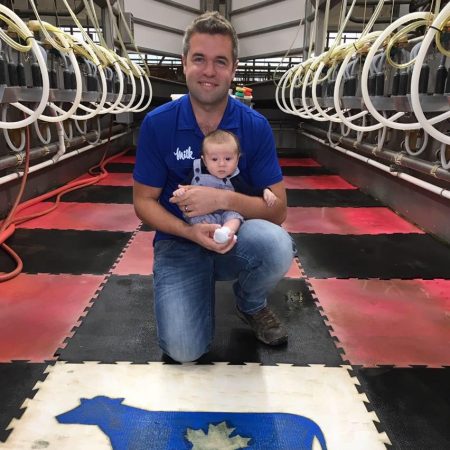 Last year I had the opportunity to contact an energetic 27-year-old dairyman who has enthusiastically selected the Jersey breed for his dairy operation. Listening to Tyler Hendriks of Seaforth Ontario as he talks about the dairy industry and Jersey breeding made me excited about the future possibilities for Jerseys.
Last year I had the opportunity to contact an energetic 27-year-old dairyman who has enthusiastically selected the Jersey breed for his dairy operation. Listening to Tyler Hendriks of Seaforth Ontario as he talks about the dairy industry and Jersey breeding made me excited about the future possibilities for Jerseys.

